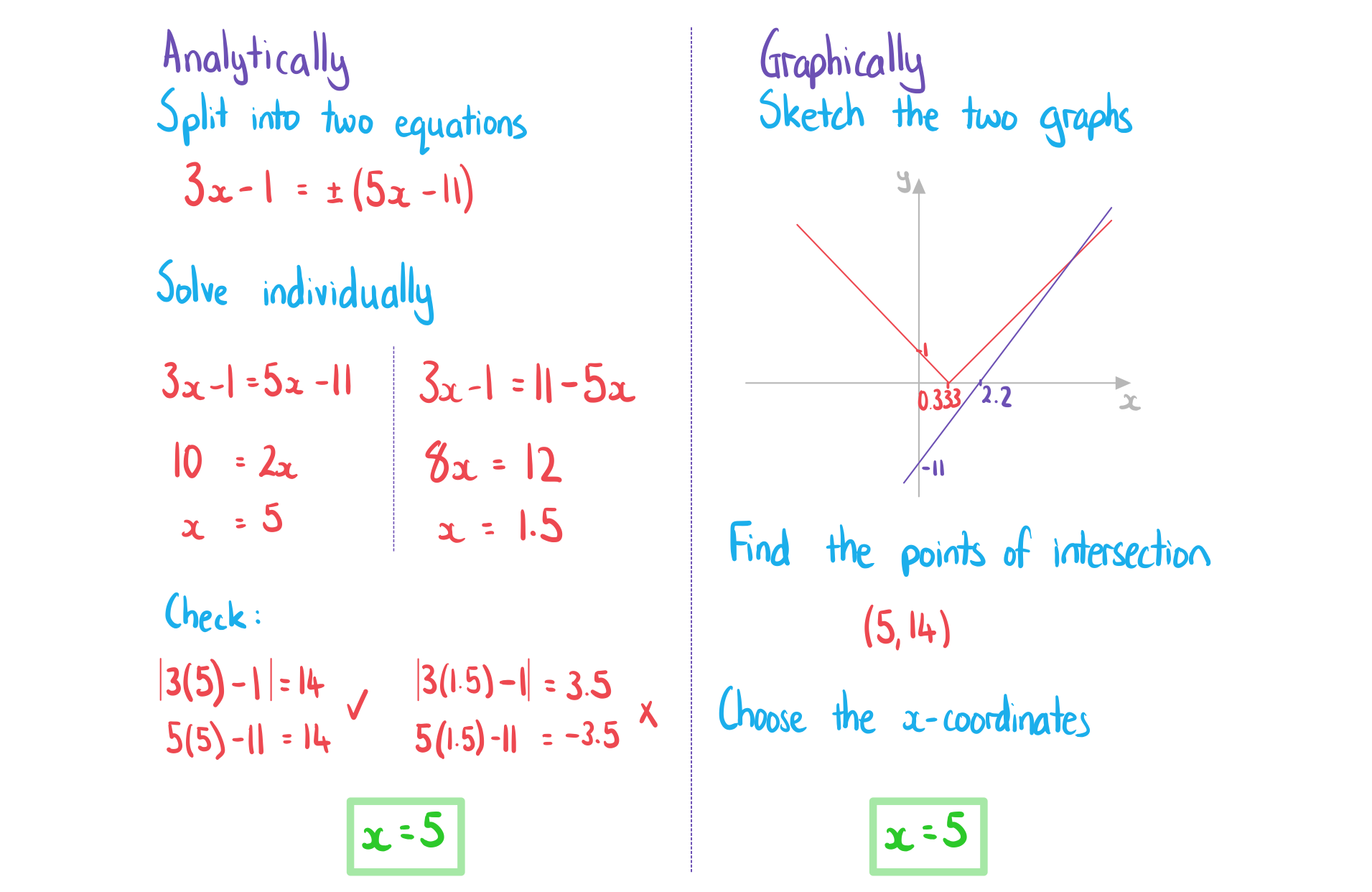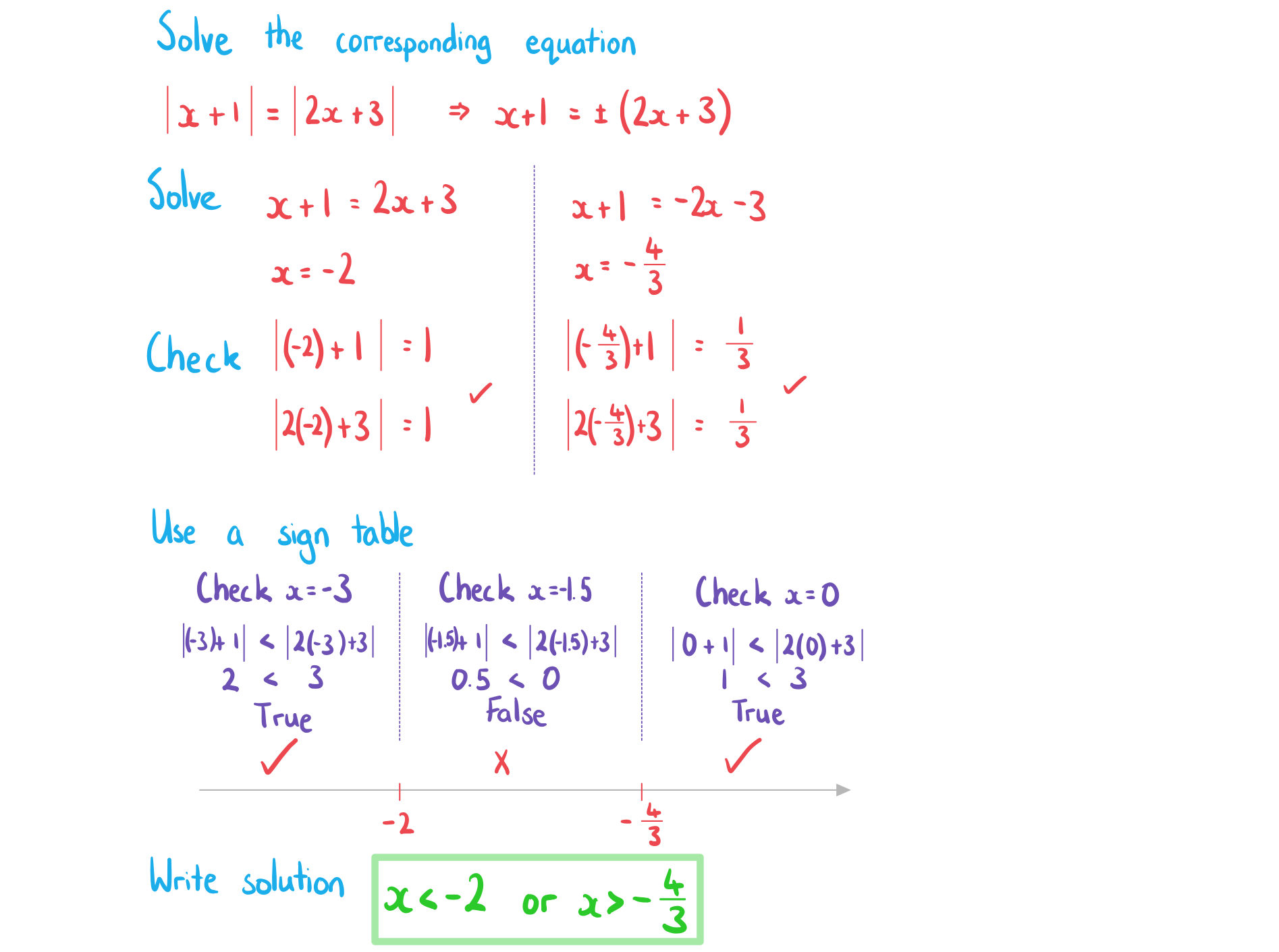Modulus Equations
How do I find the modulus of a function?
- The modulus of a function f(x) is
or
How do I solve modulus equations graphically?
- To solve |f(x)| = g(x) graphically
- Draw y = |f(x)| and y = g(x) into your GDC
- Find the x-coordinates of the points of intersection
How do I solve modulus equations analytically?
- To solve |f(x)| = g(x) analytically
- Form two equations
- f(x) = g(x)
- f(x) = - g(x)
- Solve both equations
- Check solutions work in the original equation
- For example:
has solution
- But
and
- So
is not a solution to
Worked Example
Solve for :
a)

b)

Modulus Inequalities
How do I solve modulus inequalities analytically?
- To solve any modulus inequality
- First solve the corresponding modulus equation
- Remembering to check whether solutions are valid
- Then use a graphical method or a sign table to find the intervals that satisfy the inequality
- Another method is to solve two pairs of inequalities
- For |f(x)| < g(x) solve:
- f(x) < g(x) when f(x) ≥ 0
- f(x) > -g(x) when f(x) ≤ 0
- For |f(x)| > g(x) solve:
- f(x) > g(x) when f(x) ≥ 0
- f(x) < -g(x) when f(x) ≤ 0
Exam Tip
- If a question on this appears on a calculator paper then use the same ideas as solving other inequalities
- Sketch the graphs and find the intersections
Worked Example
Solve the following inequalities for .
a)

b)

